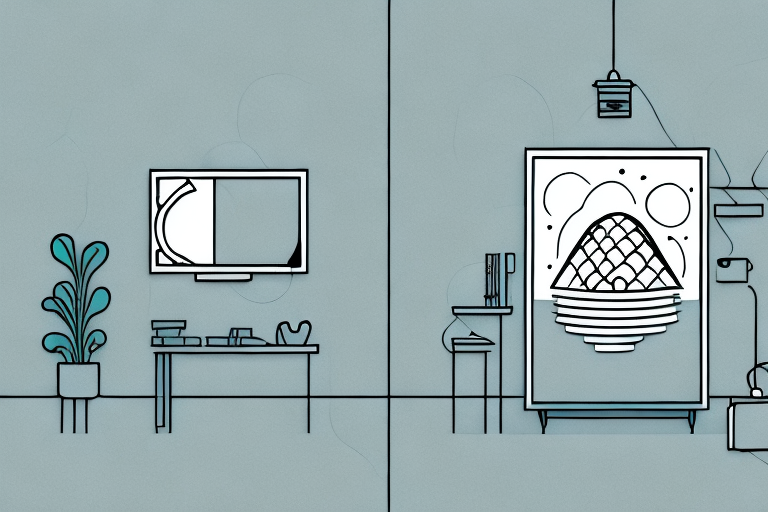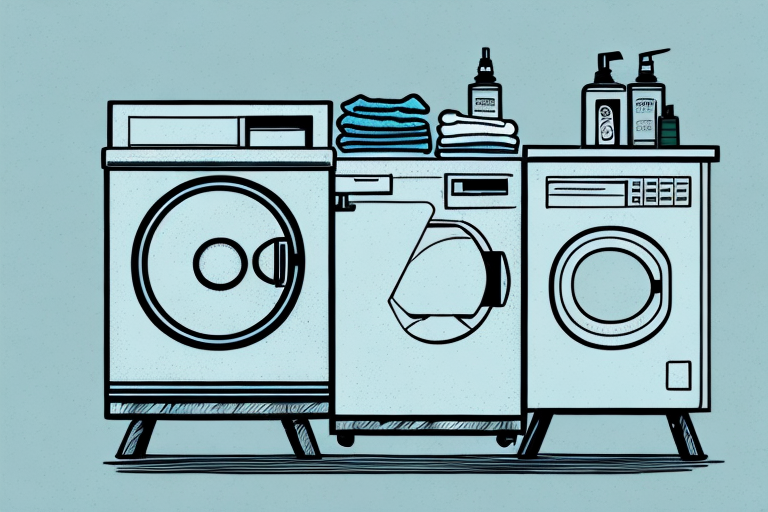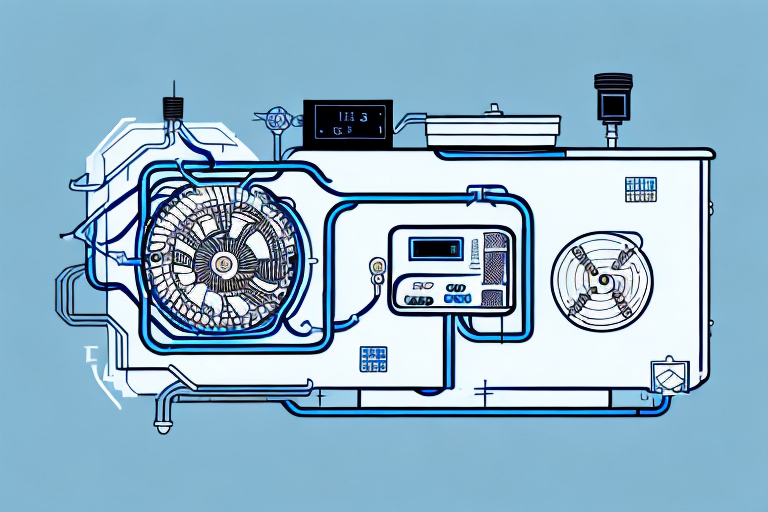If you’re concerned about the air quality in your home or workplace, you may have heard of HEPA filters. These high-efficiency air filters are designed to remove small particles from the air, but can they also remove toxic fumes? In this article, we’ll explore the science behind HEPA filters and toxic fumes, as well as their benefits, limitations, and other technologies that can help improve air quality.
Understanding HEPA filters
HEPA stands for high-efficiency particulate air, and these filters are designed to trap particles as small as 0.3 microns in size. They work by using multiple layers of filter media to capture particles as air passes through. HEPA filters are commonly used in air purifiers, vacuum cleaners, and heating and cooling systems, and have been shown to be effective at reducing airborne particles such as pollen, dust mites, and pet dander.
It is important to note that while HEPA filters are effective at capturing small particles, they do not remove gases or odors from the air. For this reason, some air purifiers and HVAC systems may also include activated carbon filters or other technologies to address these issues. Additionally, it is important to regularly replace HEPA filters according to the manufacturer’s recommendations to ensure optimal performance.
What are toxic fumes?
Toxic fumes are gases or vapors that can be harmful or even deadly to humans, depending on the concentration and duration of exposure. They can come from a variety of sources, including chemicals used in cleaning products, cooking fumes, natural gas leaks, and cigarette smoke. Exposure to toxic fumes can cause a range of health problems, including respiratory issues, headaches, dizziness, and in severe cases, organ damage or death.
It is important to note that some people may be more sensitive to toxic fumes than others. This can be due to factors such as age, pre-existing health conditions, and genetic makeup. Additionally, the effects of exposure to toxic fumes can be cumulative, meaning that repeated exposure over time can lead to more severe health problems.
Preventing exposure to toxic fumes is crucial for maintaining good health. This can be achieved by using proper ventilation when using chemicals or cooking, regularly checking gas appliances for leaks, and avoiding smoking or exposure to secondhand smoke. In the event of exposure to toxic fumes, it is important to seek medical attention immediately to prevent further harm.
How do toxic fumes affect human health?
When toxic fumes are inhaled, they can enter the bloodstream and cause damage to various organs throughout the body. This can lead to short-term health effects such as headaches, nausea, and dizziness, as well as long-term health effects such as lung cancer, heart disease, and neurological damage. The severity of these effects depends on a number of factors, including the concentration of the fumes, the duration of exposure, and the individual’s overall health status.
In addition to the physical health effects, toxic fumes can also have a significant impact on mental health. Exposure to certain chemicals can cause mood changes, anxiety, and depression. This can be particularly problematic for individuals who work in environments where they are regularly exposed to toxic fumes.
Furthermore, toxic fumes can also have a negative impact on the environment. When released into the air or water, these fumes can harm plants and animals, disrupt ecosystems, and contribute to climate change. It is important for individuals and industries to take steps to reduce their emissions and minimize their impact on the environment.
Sources of toxic fumes in homes and workplaces
Toxic fumes can come from a variety of sources in homes and workplaces, including cleaning products, building materials, furniture, and appliances. Common sources of toxic fumes include volatile organic compounds (VOCs) found in paint and flooring materials, formaldehyde emitted by pressed-wood products, and nitrogen oxides produced by gas stoves and furnaces.
In addition to these common sources, there are also less obvious sources of toxic fumes that can be found in homes and workplaces. For example, air fresheners and scented candles can release harmful chemicals into the air, and pesticides used for pest control can also emit toxic fumes. It is important to be aware of all potential sources of toxic fumes and take steps to minimize exposure, such as using natural cleaning products and ensuring proper ventilation.
Introduction to air filtration systems
Air filtration systems are designed to remove harmful particulates and gases from the air, and can be a great way to improve indoor air quality. There are several types of air filtration systems available, including mechanical filters, electronic air cleaners, and UV germicidal lamps.
It is important to choose the right air filtration system for your specific needs. Mechanical filters are effective at capturing larger particles like dust and pollen, while electronic air cleaners use an electrical charge to attract and trap smaller particles like smoke and pet dander. UV germicidal lamps use ultraviolet light to kill bacteria and viruses in the air.
How HEPA filters work
HEPA filters work by trapping particles as air passes through them. They use a combination of mechanical and electrostatic forces to capture particles as small as 0.3 microns in size. The particles are then held in the filter media until they are either removed or destroyed.
HEPA filters are commonly used in air purifiers, vacuum cleaners, and HVAC systems to improve indoor air quality. They are particularly effective at removing allergens, such as pollen, dust mites, and pet dander, as well as pollutants like smoke and mold spores.
It is important to note that while HEPA filters can capture a high percentage of airborne particles, they do not eliminate all pollutants. Regular filter replacement and proper maintenance are necessary to ensure optimal performance and air quality.
Can HEPA filters remove toxic fumes?
HEPA filters are not specifically designed to remove toxic fumes, but they can capture some gases and vapors that are associated with fumes. However, HEPA filters have limited effectiveness against gaseous pollutants such as carbon monoxide and radon, which require specialized filtration technology.
It is important to note that HEPA filters are highly effective in removing particulate matter from the air, including dust, pollen, and pet dander. They are commonly used in air purifiers and HVAC systems to improve indoor air quality. However, for removing toxic fumes, it is recommended to use a combination of air filtration technologies, such as activated carbon filters, which are specifically designed to absorb and remove gaseous pollutants.
What types of toxic fumes can HEPA filters remove?
HEPA filters are most effective at capturing particulate matter, such as dust and pollen. They can also capture some gases and vapors, including some volatile organic compounds (VOCs) that are associated with fumes. However, the effectiveness of HEPA filters against these compounds depends on a number of factors, including the concentration and size of the particles.
It is important to note that HEPA filters are not effective at removing all types of toxic fumes. For example, they are not effective at removing carbon monoxide or radon gas. It is important to use the appropriate type of air filtration system for the specific type of pollutant you are trying to remove from the air.
Benefits of using a HEPA filter in your home or workplace
HEPA filters offer a number of benefits for improving indoor air quality, including removing allergens, reducing odors, and capturing small particles that could be harmful to health. They can also help to reduce the spread of viruses and bacteria, making them a good choice for people with respiratory issues or weakened immune systems.
Another benefit of using a HEPA filter is that it can help to prolong the life of your HVAC system. By capturing small particles and preventing them from circulating through the system, the filter can reduce wear and tear on the components and improve overall efficiency. This can lead to lower energy bills and fewer repairs over time.
Additionally, HEPA filters are environmentally friendly, as they can be recycled and reused. This means that they are a sustainable choice for improving indoor air quality, without contributing to landfill waste. By choosing to use a HEPA filter in your home or workplace, you can not only improve your health and comfort, but also reduce your environmental impact.
Limitations of HEPA filters in removing toxic fumes
While HEPA filters can capture some gases and vapors, they have limited effectiveness against gaseous pollutants such as carbon monoxide and radon, which require specialized filtration technology. In addition, some VOCs and other fumes may not be effectively captured by a HEPA filter, depending on factors such as their size and concentration.
It is also important to note that HEPA filters do not remove odors from the air. While they can capture particles that may cause unpleasant smells, they do not eliminate the source of the odor itself. Therefore, if the goal is to improve indoor air quality by reducing unpleasant odors, additional measures such as ventilation or air purifiers with activated carbon filters may be necessary.
Furthermore, HEPA filters require regular maintenance to ensure their effectiveness. Over time, the filter can become clogged with particles and may need to be replaced. Failure to replace the filter can result in reduced air flow and decreased filtration efficiency. It is recommended to follow the manufacturer’s instructions for filter replacement and maintenance to ensure optimal performance.
Other air filtration technologies that can remove toxic fumes
In addition to HEPA filters, there are other air filtration technologies that can help to remove toxic fumes from indoor air. These include activated carbon filters, which are designed to adsorb gaseous pollutants such as tobacco smoke and volatile organic compounds, and UV germicidal lamps, which use ultraviolet radiation to disinfect the air and kill bacteria, viruses, and other microorganisms.
Factors to consider when choosing a HEPA filter for your home or workplace
When selecting a HEPA filter, there are several factors to consider, including the size of the filter, the type and amount of filter media, and the effectiveness of the filter against specific pollutants. It’s also important to consider the overall air quality in your home or workplace, as well as any unique factors that may affect air quality, such as pets, smoking, or cooking fumes.
Common misconceptions about HEPA filters and their ability to remove toxic fumes
One of the most common misconceptions about HEPA filters is that they can effectively remove all types of toxic fumes from indoor air. While HEPA filters can capture some gases and vapors, their effectiveness depends on a number of factors, including the type and concentration of the pollutant. It’s important to understand the limitations of HEPA filters and to choose the right filtration technology for your specific needs.
Tips for maintaining your HEPA filter to ensure optimal performance
To ensure that your HEPA filter is working effectively, it’s important to regularly clean or replace the filter media, depending on the manufacturer’s instructions. It’s also important to keep the air intake and exhaust vents clear of obstructions, and to avoid exposing the filter to moisture or extreme temperatures, which can reduce its effectiveness. By following these tips, you can help to maintain optimal performance of your HEPA filter and improve the air quality in your home or workplace.



